We sometimes have far fetched goals that seem, from the outside, as impossible as climbing the CN Tower. Where I am now in my health and fitness from where I was, was one such goal. So much so I could never have dreamed. I set small goals. Those small goals opened the door and introduced me to the stairs, difficult—but possible.
Six years ago my big goal was to lose 200 pounds. I wanted to regain my ability to walk more than a few blocks without struggling. As part of my journey, I began walking, 2-3 days a week. Short distances at first—8 blocks a day with 30 minute breaks half way between. It was hard to get motivated. After one year I lost heart because I stopped seeing results and could not motivate myself to walk further.
One year later, I resolved to try again, got into a weight management program, and joined a walking group. With the support from friends and family and health care workers, I was able to stay motivated. I started slowly, walking only four laps around a local hockey arena. I did this two days a week. I added one lap each day, in about three months I was easily walking 27 laps, equal to over 7 kilometres. In this time frame I had also lost around 80 pounds which made the walking easier.
By the time spring came around and I was able to walk outside I was walking 5-10K a day, every day. At this point I could not really get anymore fit through walking. By now I was below 300 pounds. Where to go from here? I had accomplished my first goal. I met a friend who got me to try racing. They were difficult. I had to mostly walk them. It took me 96 minutes to do 10K. I could have gotten discouraged. The support and enthusiasm from my friend kept that from happening. At that moment, I resolved to run another 10K.
Like my walking, I needed to start slowly. I needed a way to regulate my speed and timing. I joined a gym. I used the treadmill to work on intervals. 1 min running at 8 kph 2 min walking at 5.6 kph. It was hard. I needed the whole two minutes for recovery. But, when that got easier, I increased my running speed to 8.8 kph. When that got easy, I decreased my walking time. After about a month, I decided to see how far I could run without stopping at 8kph. I made it to .8 km and my legs felt great. I went to 1.6K and still good. I made it to 2.4K and still ok. I stopped there for fear of overdoing it. From there I worked on increasing my distance and speed. After two months I ran my first 5K outside in 32.5 minutes.
I had signed up for my second 10K. It was only three months after I started learning to run. I was running 5K well enough by 2.5 months. I decided that I would run 5K and walk if I had to. It would still be an improvement. The day came. It was a small race, only around 10 people in the 10K distance. All but one were ahead of me. By the 5K mark, I was a couple of minutes ahead of that person. I knew if I started walking they would catch up. I went to 6K, starting to hurt. The competitive side of me did not want to be last, but on the turn arounds, I saw that person, still running—they did not give up, I would not give up. 7K, hurting more, I wanted to stop and walk, but one more kilometre. 8 km, so close, maybe just one more. 9K, I started walking but how could I walk the last km, having come so far? I started running again. I finished with a 65 minutes and nine seconds time.
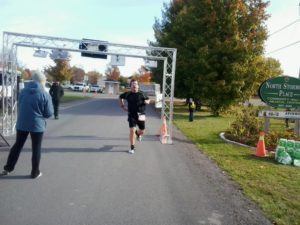
That winter I spent my time training to run 10K on a regular basis. I wanted to be able to run 10K where it would not push me to my limit. My friend who was out of town, supported me online. I do not know what possessed me, but I decided to run my first half marathon in April. Again, I had only ever run half that distance. This time, however, I had the support of my friend running with me. That support, and the atmosphere of race day, helped a lot. 2 hours 10 minutes. My legs hurt. I spent a lot of time recovering, I realize that it is not wise to push oneself that hard. I think I needed to do it, though, as a test of my determination.
With the help of many new running friends, I accomplished a lot that summer and fall. I ran a 10K pb of 54:36. I walked 40K for four days straight to support the friend whose enthusiasm got me running. I even ran a second half marathon in 2:08.
With all of those accomplishments in walking and running, where should I go from there? The most logical step of course was to train for and run a marathon. Run a marathon? Running a half marathon seemed like the ultimate accomplishment for me. With the support of my running friends, I began training. It was hard, of course. I will share a secret with all of you: the training for a marathon was hard, but in terms of soreness, and motivation, learning to walk when I first started my journey was harder. All of the hard work I had done previously had provided a base for me that I did not have when I first began walking.
I ran my first marathon on April 29, 2017. I will admit, I did walk a good portion of the second half, and I hit the wall hard. I made some technical mistakes, starting out too fast, and not carb loading enough. I did however finish in under 5 hours. 4:53:52 to be exact. I may have had to walk at times, but I did not give up. All of my journey led to this moment. All the pain, all the times when I wanted to give up but didn’t. All of it, were steps in a journey. I could not have climbed the last flight of stairs without starting the first. In May, one year after my first marathon I will be running my second. I will be racing the Ottawa Marathon. I am excited to continue to share my journey during the Ottawa race weekend. I hope to inspire many as I attempt to better my first time. And always keep finding new finish lines.





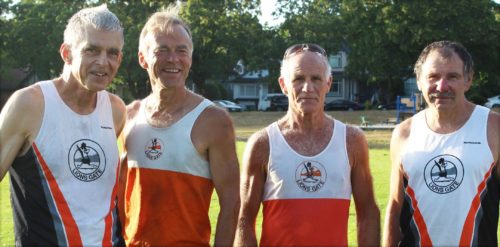




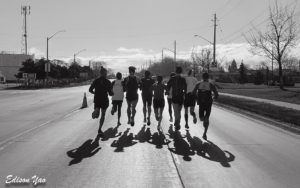

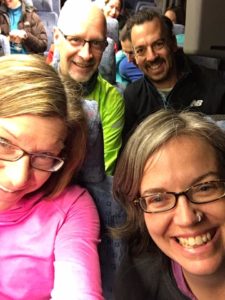
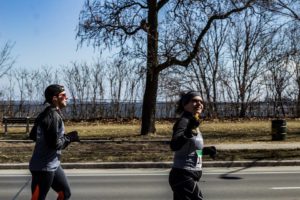
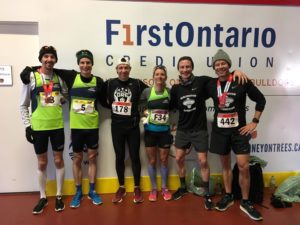
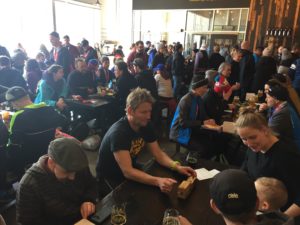

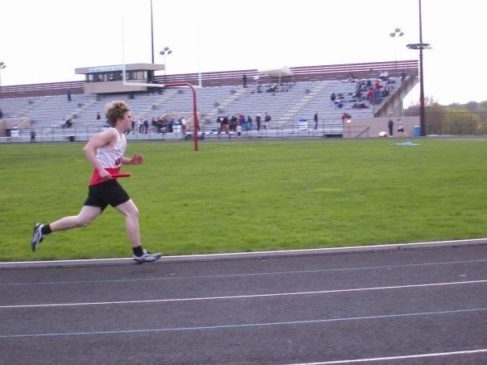

 Our Magazine
Our Magazine
